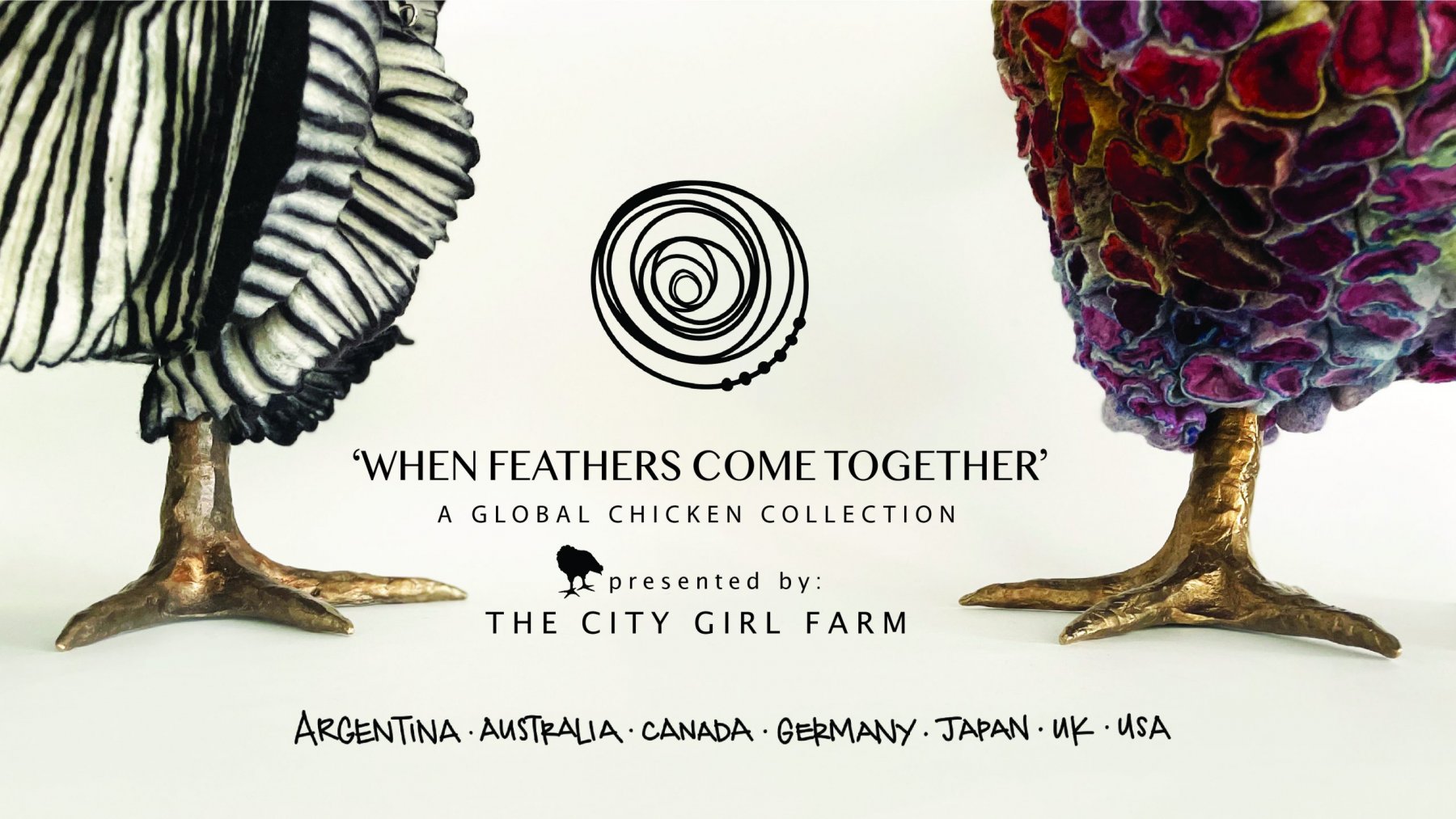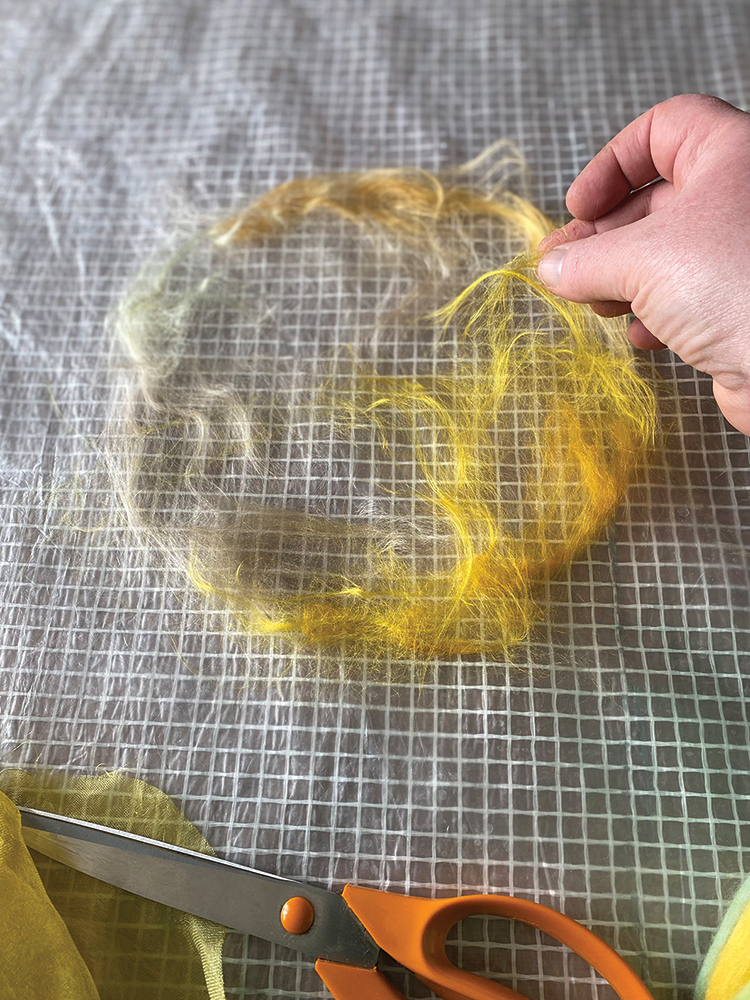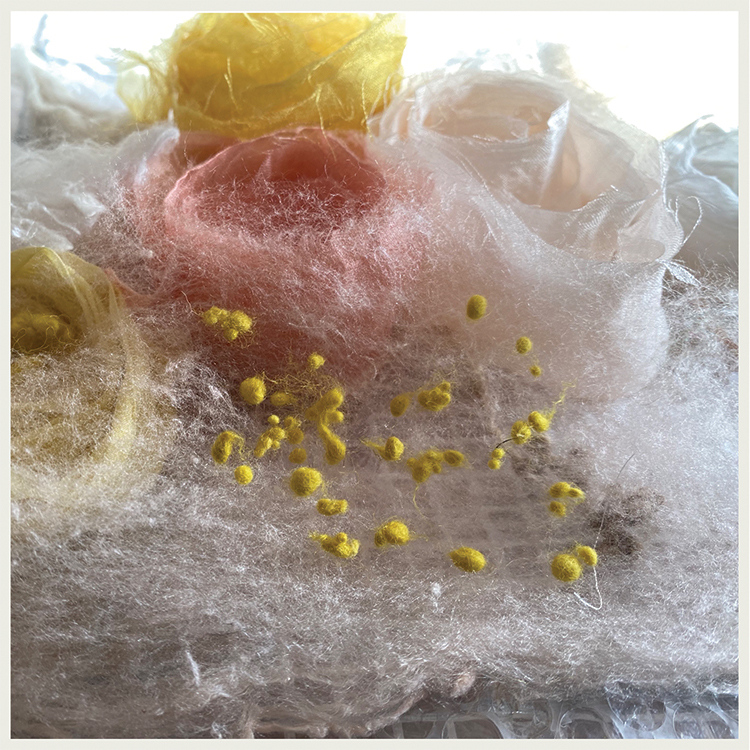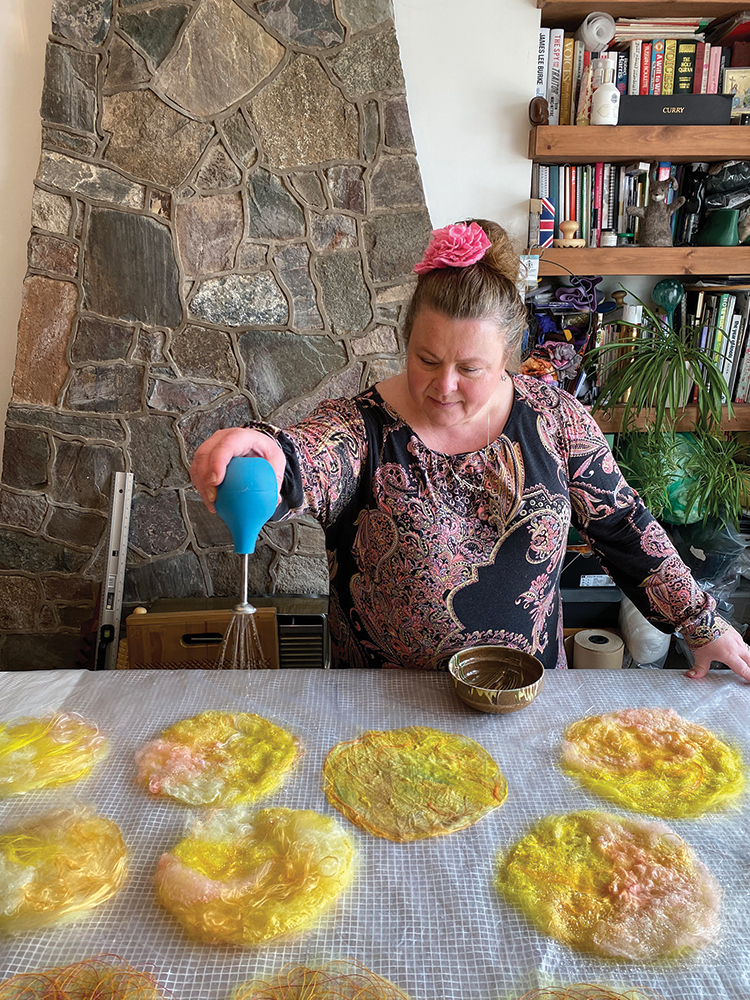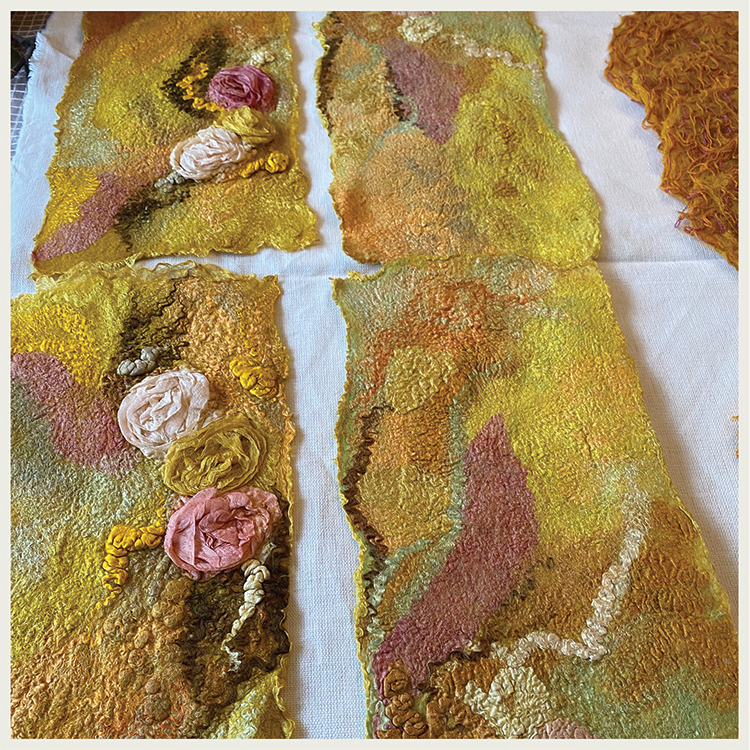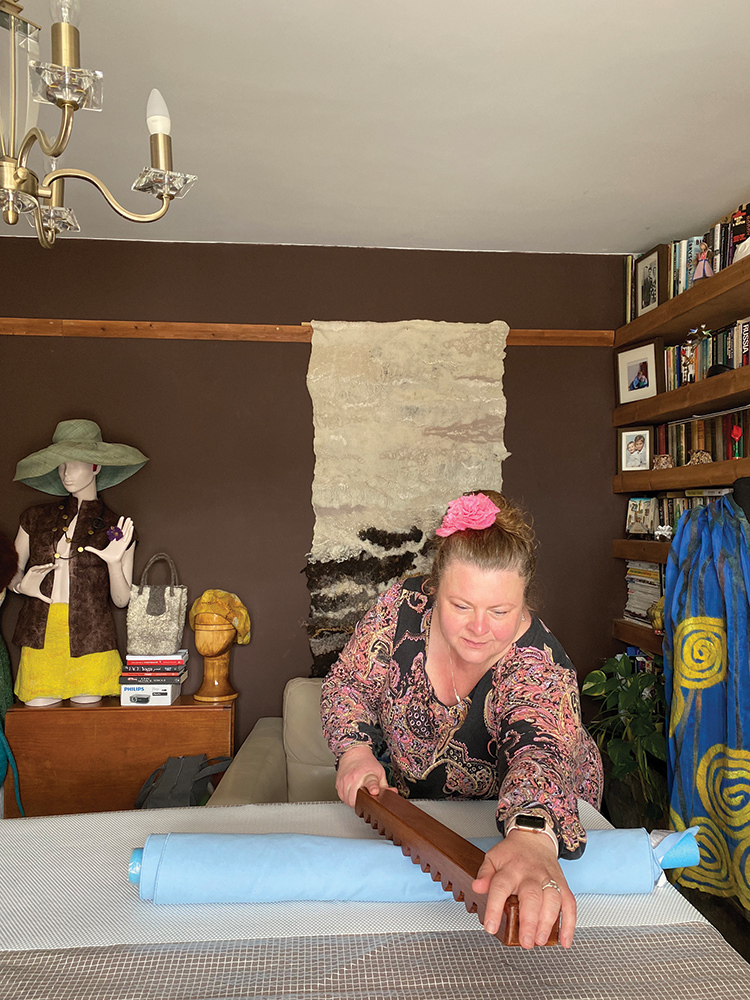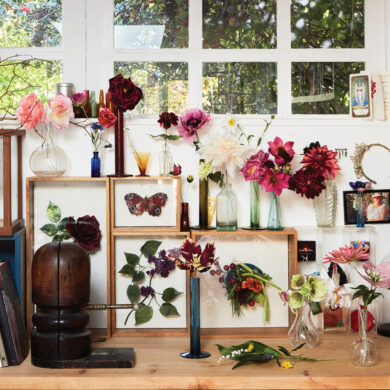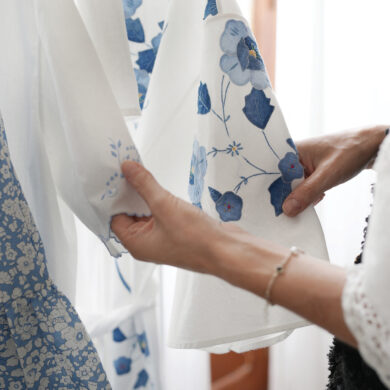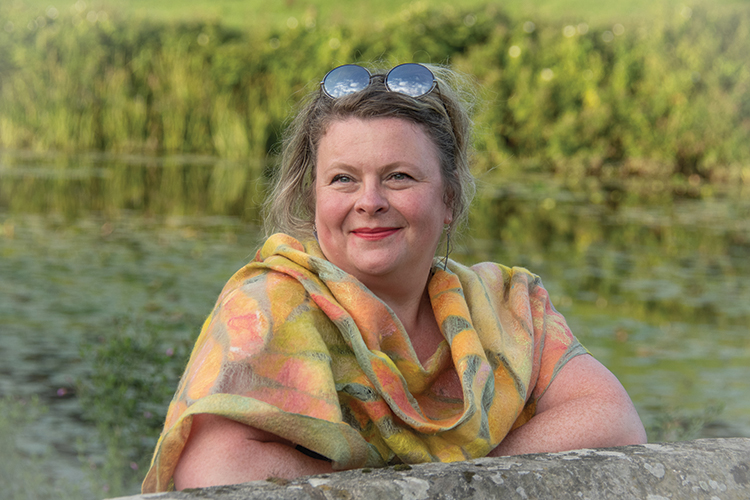
Felting is deep within me, rooted in my childhood homeland of Kazakhstan.
The companionship of wool, plus fibre friends, offers endless opportunities, and so I thought it would be only appropriate to tell a story of evolution and possibilities through the “feathers” for the lovely chickens.
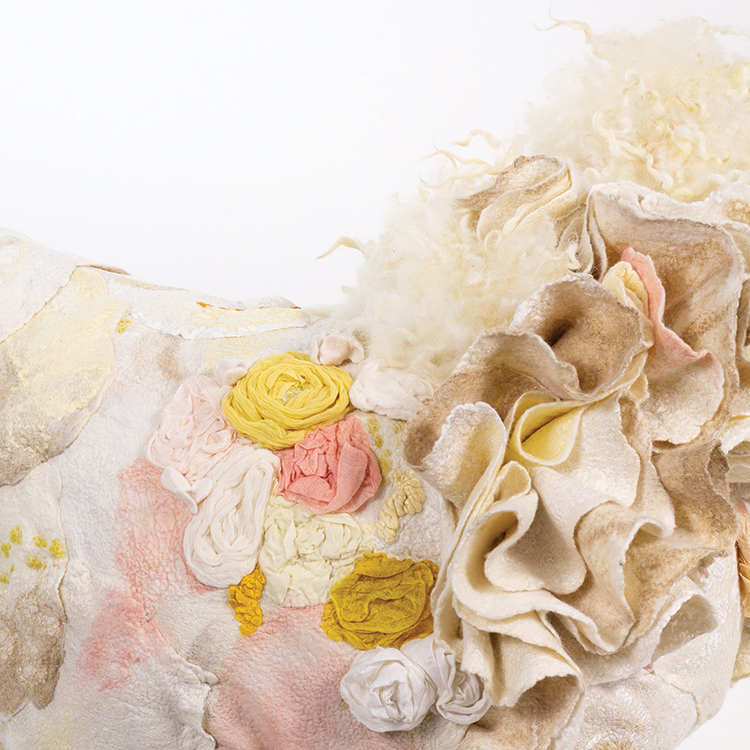
They are two sisters.
The older one, Catherine, is more traditional and showcases the luxury of two main materials: wool and silk. The wool is in its pure form, with fleece in the tail and extra-fine merino.
This lady is real class but also a bit of flirt. She combines the old and new, and east and west (silk and wool). The silk is naturally dyed using madder root, weld and onion skins.
The use of fleece takes us to more traditional felting; however, the eco-fur in her tail is a modern development, taking care of the world around us with greater commitment to species and environment.
The other sister pushes the experiment a bit further.
Little Marilyn is the second child of the family. She has her own mind. She loves family traditions but is also adventurous, stepping out of “natural” materials and adding diversity with viscose, hemp, bamboo and nepps, alongside silk fibres — mulberry, tussah — and fabrics margilan, ponge, chiffon.
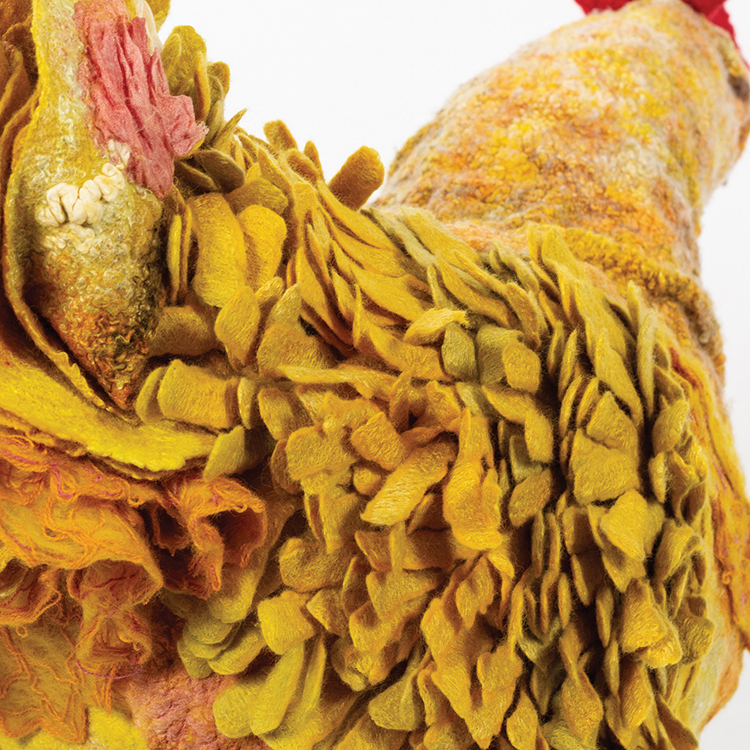
THE PROCESS
When I describe the process of felting, I actually love to compare it with a wedding. Two families meet, interact, then start first connections and merge into one, just like wool fibres engage with each other and slowly felt into a robust bond.
For me, preparation is everything, especially as I also have a job in the community and two active kids who demand my skills as driver, coach, cleaner, chef…
I love large-scale projects, but I have a rather restricted space in my felting room, so I’m always experimenting with different approaches.
As I am a very curious person, I use lots of tools, even a sanding machine, but my favourites are good soap and my own hands.
For me, the layering process is where the journey really starts. That initial laying down of those fine fibres on the table.
I like to play when layering as it helps to achieve effects such as stretchy, textured flat and thin felt, lacy spider web and more.
Water and soap are then sprinkled onto the layer, gently ensuring that water does not mess up the design. You do not need to soak but thoroughly wet all layers.
Then comes the actual felting. You can roll the project gently in different directions. The fibres open, connect with each other and merge into material.
The next stage is what’s known as “fulling.” This is where the project shrinks and takes the shape you designed.
I then take a further look at the details. For example, edges tend to go wavy and if they’re not in your design, you need to work on them.
All that is left to do is to rinse, shape, dry and possibly embellish with embroidery and other elements, ready to put a smile on your face.
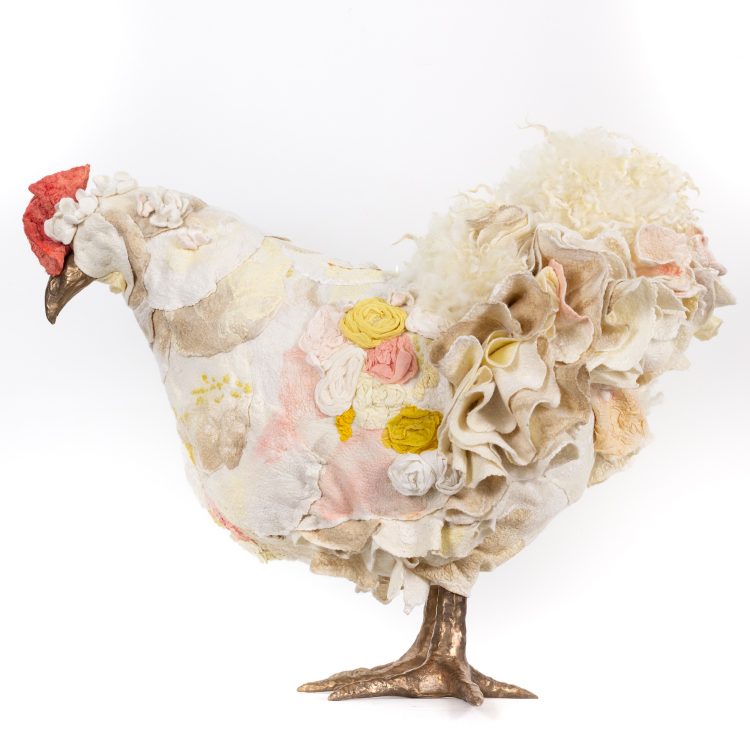
CATHERINE
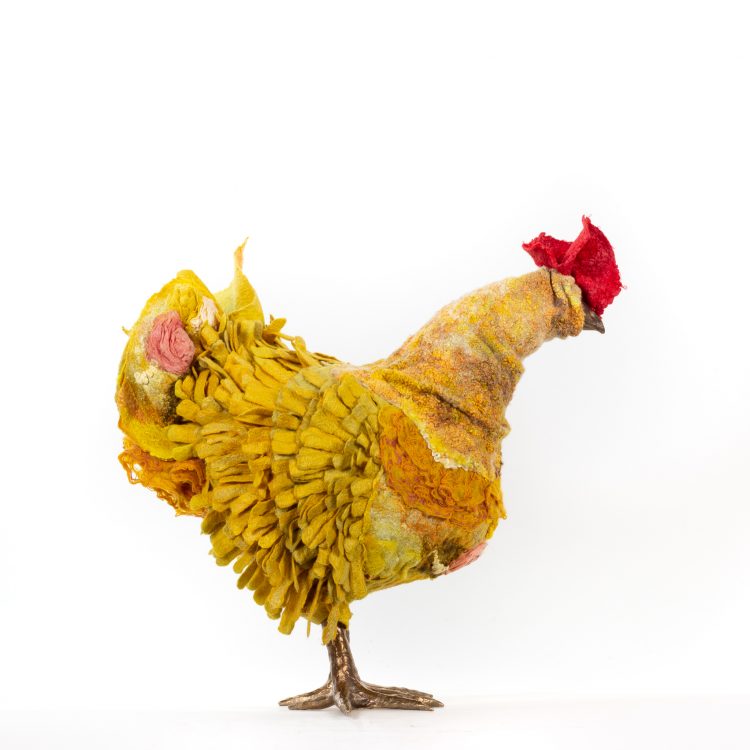
LITTLE MARILYN

Felting is deep within me, rooted in my childhood homeland of Kazakhstan.
The companionship of wool, plus fibre friends, offers endless opportunities, and so I thought it would be only appropriate to tell a story of evolution and possibilities through the “feathers” for the lovely chickens.

They are two sisters.
The older one, Catherine, is more traditional and showcases the luxury of two main materials: wool and silk. The wool is in its pure form, with fleece in the tail and extra-fine merino.
This lady is real class but also a bit of flirt. She combines the old and new, and east and west (silk and wool). The silk is naturally dyed using madder root, weld and onion skins.
The use of fleece takes us to more traditional felting; however, the eco-fur in her tail is a modern development, taking care of the world around us with greater commitment to species and environment.
The other sister pushes the experiment a bit further.
Little Marilyn is the second child of the family. She has her own mind. She loves family traditions but is also adventurous, stepping out of “natural” materials and adding diversity with viscose, hemp, bamboo and nepps, alongside silk fibres — mulberry, tussah — and fabrics margilan, ponge, chiffon.

THE PROCESS
When I describe the process of felting, I actually love to compare it with a wedding. Two families meet, interact, then start first connections and merge into one, just like wool fibres engage with each other and slowly felt into a robust bond.
For me, preparation is everything, especially as I also have a job in the community and two active kids who demand my skills as driver, coach, cleaner, chef…
I love large-scale projects, but I have a rather restricted space in my felting room, so I’m always experimenting with different approaches.
As I am a very curious person, I use lots of tools, even a sanding machine, but my favourites are good soap and my own hands.
For me, the layering process is where the journey really starts. That initial laying down of those fine fibres on the table.
I like to play when layering as it helps to achieve effects such as stretchy, textured flat and thin felt, lacy spider web and more.
Water and soap are then sprinkled onto the layer, gently ensuring that water does not mess up the design. You do not need to soak but thoroughly wet all layers.
Then comes the actual felting. You can roll the project gently in different directions. The fibres open, connect with each other and merge into material.
The next stage is what’s known as “fulling.” This is where the project shrinks and takes the shape you designed.
I then take a further look at the details. For example, edges tend to go wavy and if they’re not in your design, you need to work on them.
All that is left to do is to rinse, shape, dry and possibly embellish with embroidery and other elements, ready to put a smile on your face.

CATHERINE

LITTLE MARILYN





